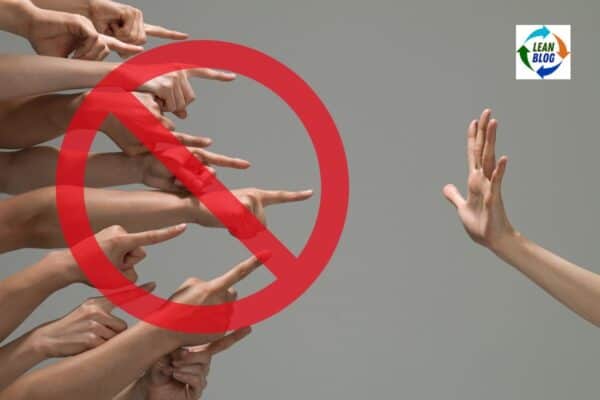I'm very happy to announce the release of my new Mistake-Proofing course, available NOW through Karen Martin and TKMG Academy.
Well, it's a mistake to call it “my” course. This course, available now, is the result of collaborating with a great team, including:
- Working with Karen on the script,
- Karen and her team lining up and facilitating recording in a professional studio (coaching me through reading a prompter for the first time, and
- Karen and her team doing a lot of post-production work, including editing and graphics.
This video is a short preview, from the start of Lesson 1:
You can buy the course individually at TKMGAcademy.com for $129. Volume discounts are available for large teams or your entire workforce (for more information, email info@tkmgacademy.com).
The course is also part of the wonderful collection of courses in the all-access annual subscription.
Other TKMG Academy instructors in the series include Karen Martin, Elisabeth Swan, Mike Osterling, Tracy O'Rourke, Brent Loescher… and more.
And if you subscribe to TKMG Academy, you can participate in Karen's “Community of Practice” meeting with me on Wednesday, June 26th.
I'm happy that the course includes both specific techniques you can use to prevent and reduce mistakes–and the elements of workplace culture that are necessary to prevent mistakes. Organizations need to use systemic mistake-proofing methods, while reacting to mistakes in a way that leads to learning and improvement instead of blame and punishment.
Those cultural elements are the most important aspect, as I also discuss in my book The Mistakes That Make Us: Cultivating a Culture of Learning and Innovation.
Why This Course?
In today's fast-paced work environments, mistakes can be costly. However, with the right approach, they can also be incredible opportunities for learning and improvement. This course is designed to equip you with practical tools and techniques to prevent mistakes before they happen and to respond constructively when they do.
Key Benefits of the Course:
Comprehensive Content: The course covers various types of mistakes, degrees of mistake-proofing, common root causes, contributing factors, prevention and detection countermeasures, and the crucial role of psychological safety.
Engaging Format: With 15 lessons totaling 1 hour and 14 minutes, this course is concise yet comprehensive. It includes four additional resources to deepen your understanding.
Recognition: Learners who pass the final exam receive a certificate and a digital achievement badge, showcasing their commitment to quality and continuous improvement.
For more details, visit TKMG Academy Mistake Proofing Course. I hope you like it!
Karen and I would love to hear your feedback.
Transcript:
Hi. Welcome to the TKMG Academy Course, Mistake Proofing. I'm your instructor, Mark Graban.
We ALL make mistakes. We're all VICTIMS of mistakes. But hopefully, we only experience MINOR ones, like a barista handing you the wrong beverage at your favorite coffee shop.

So what IS a mistake? A mistake is an action or decision that TURNS OUT TO BE misguided or wrong. The key words there are “turns out to be.”
When taking action or making a decision, most people believe that–in that moment–they're doing the RIGHT thing the right way. They don't THINK they're wrong.
But mistakes are always discovered in HINDSIGHT–when we learn that the outcome of an action or decision did NOT match what we expected or predicted to happen.
Or we act HASTILY without considering whether our decision or action could result in a poor outcome.
Thinking proactively about “what COULD go wrong?” and “what's the WORST that can happen?”–is the first step toward intentional efforts to prevent or mitigate mistakes.
Some mistakes cause a LITTLE frustration, while others cause great HARM–like a restaurant serving someone a dish with SEAFOOD in the sauce after being told the diner has a severe ALLERGY.

Manufacturing mistakes, like NOT tightening some bolts–or not ATTACHING them to begin with–can create an unsafe product.

Healthcare mistakes can cause harm or death if–for example–a nurse gives the wrong medication to a patient.

Notice that I said, “The NURSE gives . . .” BUT… should we BLAME the nurse for administering the wrong medication? No. There's more to it.
Work is a TEAM effort, and–most of the time–errors result from a BREAKDOWN in processes or the work environment.
Instead of BLAMING a person–or multiple people–after the fact, top-performing organizations focus on PREVENTING mistakes in systematic ways–that's the practice of mistake proofing and the focus of this course.

What do you think? Please scroll down (or click) to post a comment. Or please share the post with your thoughts on LinkedIn – and follow me or connect with me there.
Did you like this post? Make sure you don't miss a post or podcast — Subscribe to get notified about posts via email daily or weekly.
Check out my latest book, The Mistakes That Make Us: Cultivating a Culture of Learning and Innovation:





![A LinkedIn Live Event on Visual Workplaces & Lean Management [Recording]](https://www.leanblog.org/wp-content/uploads/2024/12/Lean-LinkedIn-Live-2-238x178.jpg)
![Psychological Safety is the Foundation for Continuous Improvement [Video]](https://www.leanblog.org/wp-content/uploads/2024/09/Lean-Blog-Post-Cover-Image-21-238x178.jpg)


